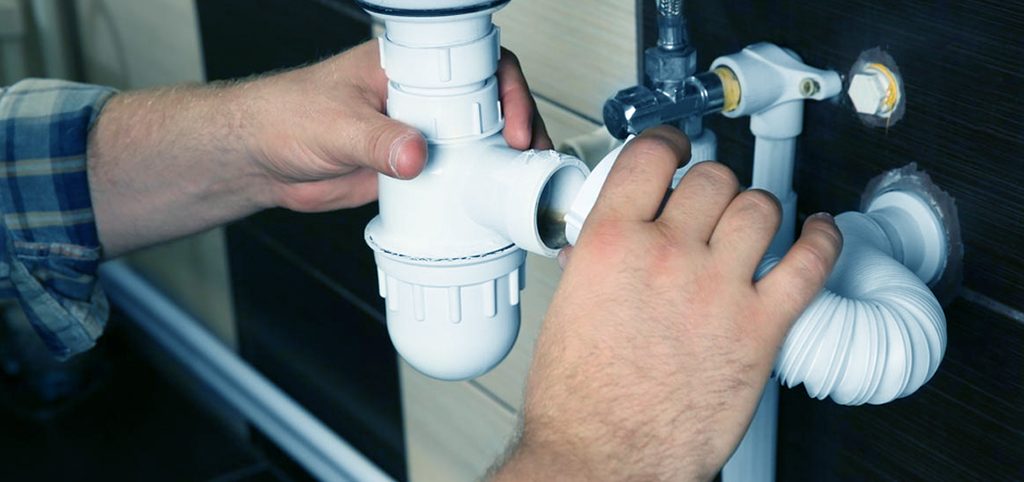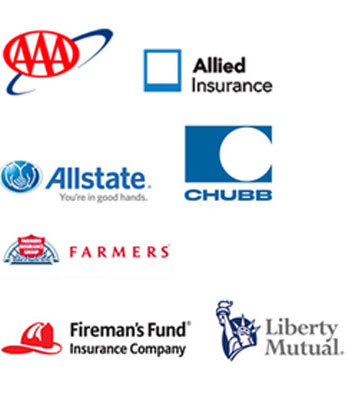Water is essential in our homes—as long as it is safely kept in a pipeline, sink, tub, or other appropriate equipment, such as a dishwasher. However, if water gets into places it should not, it can quickly become an enemy, causing structural and furniture damage. Sadly, even in recent homes, plumbing leaks are widespread, and it is possible that every home will have at least one. Furthermore, not all leaks are visible; in fact, some might be quite subtle, making it critical to detect and patch a leak as quickly as possible. Water leaks not only raise your water bill, but they also have the ability to ruin your house.
Whatever the size of the water leak, you will have to pay for it either through the water bill or via damages. Follow these steps to learn about the causes of home water leaks, how to test for leaks, the consequences of not addressing the leak, when to call a plumber for water leak detection service, and how much it will cost for fixing the leak.
So, it’s essential to identify the main water leak causes and take quick action to fix it.
What Are The Main Water Leak Causes?
Clogged Drains
While hair strands, filth, and detritus can block your drains and lead them to overflow, they can also cause them to rupture or fracture over time. Uncleared clogs might lead to increased tension in the drains, putting strain on your water pipes and causing damage.
Leaky Toilet
Water leaks are found in 20% to 35% of all household toilets. While toilet leaks are not uncommon, they might have a variety of causes that go unreported. If your toilet flushes by itself, you have a toilet leak caused by a faulty flapper or a leak in the flush valve seal.
Another problem could be the breaking of the toilet’s seal. Unless there is a foul odor emanating from the toilet, this leak will usually go undiscovered. Check for corrosion on the screws and nuts, as well as mold around the toilet’s bottom. Please, ensure that there is a proper installation of the toilet, as a loose toilet might allow water to leak through the seal.
High Water Pressure
Water pressure that is too high can cause a lot of harm to the pipes. The normal water pressure in your house should be 60 psi (pounds per square inch), with the plumbing program built to tolerate up to 80 psi.
Water pressure that is too high is generally out of your hands. High water pressure can be caused by living in areas with hills, large buildings, or close to fire hydrants. Consult a plumber offering water leak repair service on how to control the water pressure in your home.
Corroded Pipes
Corrosion in pipelines is an unavoidable problem. Even if you insulate the metal to keep it away from corrosion, rusted pipes will ultimately occur. Pinholes can occur in your pipes as they become weak, resulting in minor leaks.
High or low pH values in your water are the most common causes of pipe corrosion. The pH scale determines how acidic the water is. You need to purchase PH test strips from any hardware shop to determine the pH level of your water. The pH level of your water should be between 6.5 and 8.5. Install water treatment equipment to adjust pH levels if you have high or low pH water.
Leaks in Water Supply Lines
There are occasionally leaks in the water supply pipe between the meter and the property. Since the supply line is usually placed at least 3 feet (.91 m) below the surface of the ground, these spills are often hard to detect. The leaky water might sometimes make its way back to the meter along the pipe. If there is water in the meter box that is not due to rainwater or irrigation run-off, there may be a leak in the supply connection. Where the water line goes above the ground and/or joins the house is yet another frequent departure location for leaking water.
However, this could suggest a leak if the soil is continually damp at these spots. Water will leak up to the earth’s surface in serious leaks, usually right above the course of the underwater pipe. Mostly, the homeowner is responsible for leaks between the meter and the property; the water utility is responsible for leaks from the meter or pipes flowing from the main to the meter. Before attempting to fix the water supply pipe, contact the water utility. If the utility determines that the leak is the homeowner’s fault, all repairs should be done by a professional plumber. It is not a repair that a homeowner should attempt.
Leaks in Evaporative Coolers
Evaporative coolers, often known as swamp coolers, are used to cool some homes in arid conditions.
The gadget cools air sent into the house by evaporating water. For keeping water in the cooler’s tank, evaporative coolers are frequently connected directly to the water supply. When the reservoir’s refill system fails to close, a steady stream of water enters the reservoir and drains out the overflow line. Because the overflow line is frequently attached to a sewer drain, the leak can go undetected for months or even years before you discover the water loss. By turning off the machine and noting any water flowing via the overflow line, the cooler may be easily verified for leaks. You can replace the replenishment valve, recirculating pump, or water lines to fix a leaking cooler.
How to Find Water Leaks?
Keep An Eye Out For Patches Of Greener Grass
Everybody wants a beautiful lawn, but if a section of your lawn is considerably healthier (and grows quicker) than the rest, it could be the location of a leaking hidden water line. If the leak is severe enough, you may notice puddles on the ground’s surface.
Assess Your Appliances And Fixtures
Check the cupboards under the dining, washing, and bedroom sinks to ensure they are dry if the water meter test suggests a leak within your home. Look for puddles behind the water heater, dishwasher, and laundry washer, as well as at the bottoms of tubs, toilets, and baths. Turn off the water supply valve to that item or outlet and call a professional if you see any puddles.
Test The Toilet With Dye
If there are no puddles near fixtures or devices, check to see if the toilet needs to be fixed, as it is a common source of interior leaks. The flapper on the toilet (a rubber stopper that keeps water out of the basin until you flush it) could become brittle over time, enabling water to flow from the reservoir into the bowl. Fill a bottle with food coloring and sprinkle a few drops into each toilet tank in the home. Color will develop in the toilet after 5 seconds if the tank is leaking. Call a plumber if you notice color in the basin, or if you are skilled with DIY tasks, you can usually change the flapper yourself.
When To Call A Plumber?
Certain water leaks can sometimes be simply fixed without the assistance of the water leak repair service. These simple repairs to prevent your plumbing system from spilling can be done with minimal knowledge and instructions.
Leaky Faucet
Leaky taps, whether indoors or outdoors, are usually caused by an outdated faucet washer. Remove your valve and valve stem to find this small, circular rubber piece. You may replace the faucet washer at any hardware shop if it appears worn or degraded. If you buy a faucet washer that does not match the old one, it will not fit.
Leaky Toilet
Certain toilet leaks will necessitate the services of a plumber. However, as previously indicated, there are a variety of reasons for a toilet leak, and a number of them are simple to solve. The causes of the toilet leak could be a damaged flapper or a malfunctioning fill valve in this scenario.
Examine the sea levels in both the toilet bowl and the tanks. Put food coloring in the bowl, wait twenty minutes, and examine the toilet bowl to see if the food coloring has seeped into the basin. It is time to repair your flapper and fill valve if food coloring is in the toilet bowl. All of these things can be found at your local hardware shop, along with easy-to-follow instructions.
Hazardous Leaks
Whenever your water system begins to leak, your first reaction is to attempt to solve the problem immediately in order to avoid the dreaded plumbing expense. Even though there are numerous YouTube videos on how to fix your drainage system, doing so yourself can result in problems that cost far more than a plumbing cost.
When you are not sure what you are doing, it is advisable to get the help of a trustworthy L&S Turnkey plumber who understands what they are doing.
Take Advantage of Water Leak Detectors
Installing a residential water leak detector is an excellent way to prevent water damage (or sensors). When outdated or simpler water leak detectors detect water, they sound an alert, but the property owner must be present to hear the alert and take measures to avoid water damage.
Water leak detectors, on the other hand, have advanced in recent times and may now send texts when undesired water or moisture is detected. Some of these “smart” devices will even turn off the water flow just in time to avoid severe water damage.
Smart leak detection systems include many small moisture/leak sensors. You can put these battery-operated gadgets near places that are more susceptible to water damage.
The best water leak detector has the ability to establish a minimum amount of water that must be present before an alert is generated. It allows property owners to learn about water accidents that may cause damage rather than minor spills. Smart leak detectors also monitor temperature differences in a home, and if there is an unusual shift in temperature, the gadget will transmit an alert.
The majority of smart leak detectors on the marketplace are designed to work with smart homes. Leak sensors, carbon monoxide (CO) detection systems, thermostats, and motion sensors are among the smart devices that may be added to such networks, which feature a central hub that connects to a Network, an app, and a number of smart gadgets that can be installed. The hub connects all connected devices, and may be monitored and managed using the app.
Automatic leak detectors are simple to install and do not require any additional tools. Configuring home automation with leak detection devices, on the other hand, may necessitate the assistance of a professional. Additionally, you must examine the batteries and energy sources on a regular basis to ensure that the detectors function effectively throughout the year.
Why Do You Need Professionals For Water Leak Inspection?
Do not put off fixing these leaks any longer! Allow the professionals at L&S Turnkey to inspect any water leak in your home. We can help with everything from water heaters to tubs and showers. Our staff’s experience in the home care industry enables them to provide a higher and much more efficient level of service to you.
What Does A Plumbing Inspection Entail?
Inspection of your plumbing is an important element of your home’s routine upkeep. In this last part of our post today, we will walk through the procedure of a plumbing inspection as well as who can perform plumbing examinations and how much a plumbing inspection could cost. We believe that after reading this, you will agree that plumbing checks are worthwhile.
What Is The Purpose Of A Plumbing Inspection?
A professional plumbing audit is a comprehensive examination of your home’s plumbing to determine its current state. The following is a list of what should be looked at during a thorough plumbing audit.
- Protect Your Property – Even a little plumbing issue can cause serious structural and physical damage to your home. Small problems are the most difficult to spot with the untrained eye, and if ignored, they can swiftly escalate into a much bigger problem over time. Having a plumbing inspection conducted by a qualified plumber might help you avoid a plumbing disaster.
- Save Money – Even the least leaks can cause significant damage, which can be expensive to repair. The small resources needed for a plumbing audit are far less than the cost of repairing and replacing your drywall, floor tiles, and ceilings.
- Peace of Mind – Finding a leak and wondering where it came from, not to bring up the damage might have caused, can be frightening. By arranging a routine plumbing check, you can avoid allowing leaks to gain the upper hand and ensure that they are swiftly found and repaired. It gives a homeowner tremendous comfort knowing that their home plumbing system is secure and in good functioning order.
L&S Turnkey Is Committed To Provide Honest Service And Upfront Rates
Only a professional plumbing firm with skilled and licensed plumbers should do a plumbing audit. Check the plumbing firm you are thinking about on the internet and read some reviews. Seeking information on platforms like Facebook, Yelp, and Twitter may teach you a lot about local plumbing providers and their reputation.
The cost of a standard plumbing inspection varies based on the size of your home or business. With any repair or other sort of plumbing work from L&S Turnkey, an in-home inspection is entirely free. An in-depth inspection by a skilled and certified plumbing technician is included. We can precisely estimate the price of your plumbing project thanks to these examinations. You can trust us to be open and straightforward about the expenses of our solutions, and we will work hard to keep all of our plumbing jobs within your budget.



